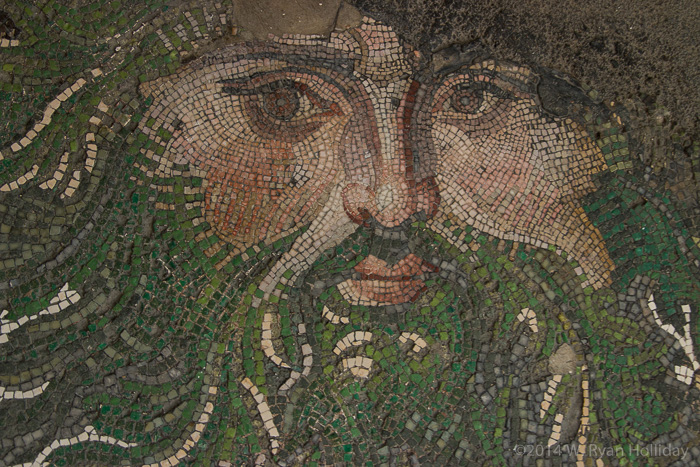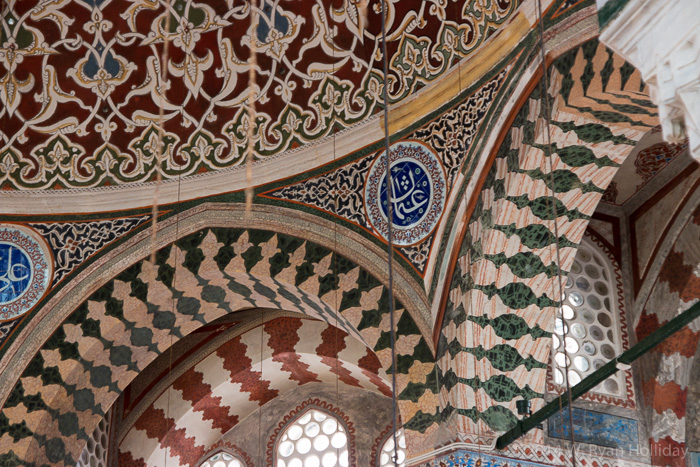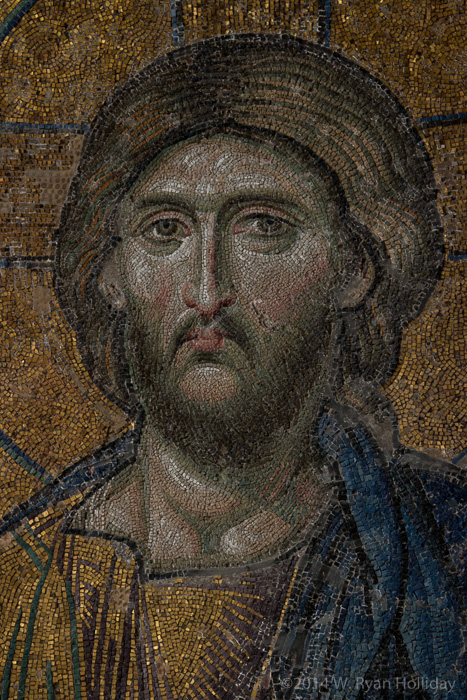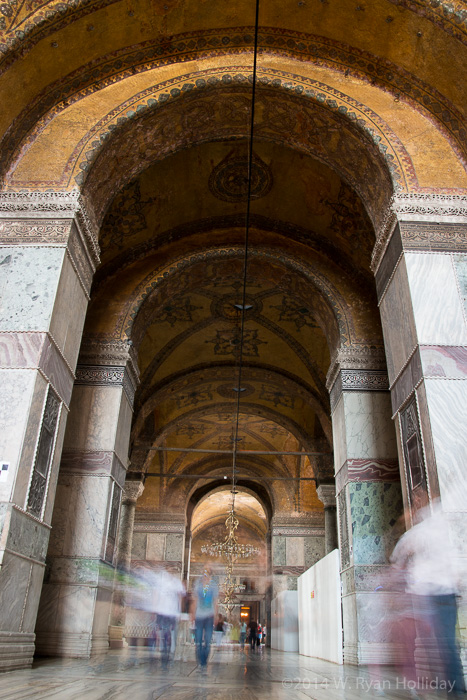The tour groups filtering through the Blue Mosque seemed to allow about fifteen minutes to visit the place, which means I probably saw nine rotations go through while I enjoyed the cavernous interior – at the rate I’m going, four days will be enough to see only a tiny, tiny fraction of Istanbul.
By the standards of Istanbul’s other monuments, the Blue Mosque is fairly young, having been built only 400 years ago, but it is equally as impressive as its older siblings. 20,000 handmade tiles decorate the inside walls and pillars, the central dome rises 141 feet into the air, eight supporting domes create a huge interior space, and one awed and smiling American got to enjoy it all for a good chunk of the morning.
The day’s next visit was to the nearby Mosaic Museum, which is the remnant of a 4000 square meter mosaic courtyard built by Justinian about 1500 years ago that, for whatever reason, was mostly built over and forgotten as the centuries passed by. Today archaeologists have restored a portion, and I’d put the artists who built it up against any artist living today – it’s an impressive piece of creative work. Following that stop it was back to the Hagia Sophia to see the tombs of four sultans. All of the tombs were inside of large domed buildings, all impressively decorated with tiles, and the actual sarcophagi (?) were carpeted on the outside, which I guess is the way you do it when you’re a sultan (or a relative of a sultan) of one of the largest empires ever to exist on Earth.
Thereafter it was off to the Topkapi Palace, the seat of the Ottoman Empire from 1465–1856. The palace grounds included four courtyards and hundreds of rooms, leading to a tired set of legs when all was said and done. The Sultans lived well, as evidenced by the residence area (the Harem), the museum exhibits that included an 86 karat diamond and bowls filled with emeralds, the ornate receiving rooms, and the tremendous views out over the Bosphorus Strait. The day’s final visit was to the Hagia Irene, a church that is slightly older than the Hagia Sophia but slightly less massive and in a much greater state of disrepair. Surprisingly, the worn down old building is used today primarily for musical performances, as it apparently has amazing acoustics under its high dome.
Finally, random side note, but while the focus on wildlife for this trip won’t start for two more weeks when I reach Tanzania, it’s impossible not to notice that they have (very loud) parrots here, too. In addition, there are a surprising numbers of birds that have found holes in the exteriors of the historic buildings and set up homes in hidden corners of architectural wonders. Hearing a pigeon flying through the vast interior of the Hagia Irene or Hagia Sophia isn’t what I necessarily expected in the stillness of a 1500 year old religious edifice, but at the same time it definitely doesn’t detract from the ambiance.




